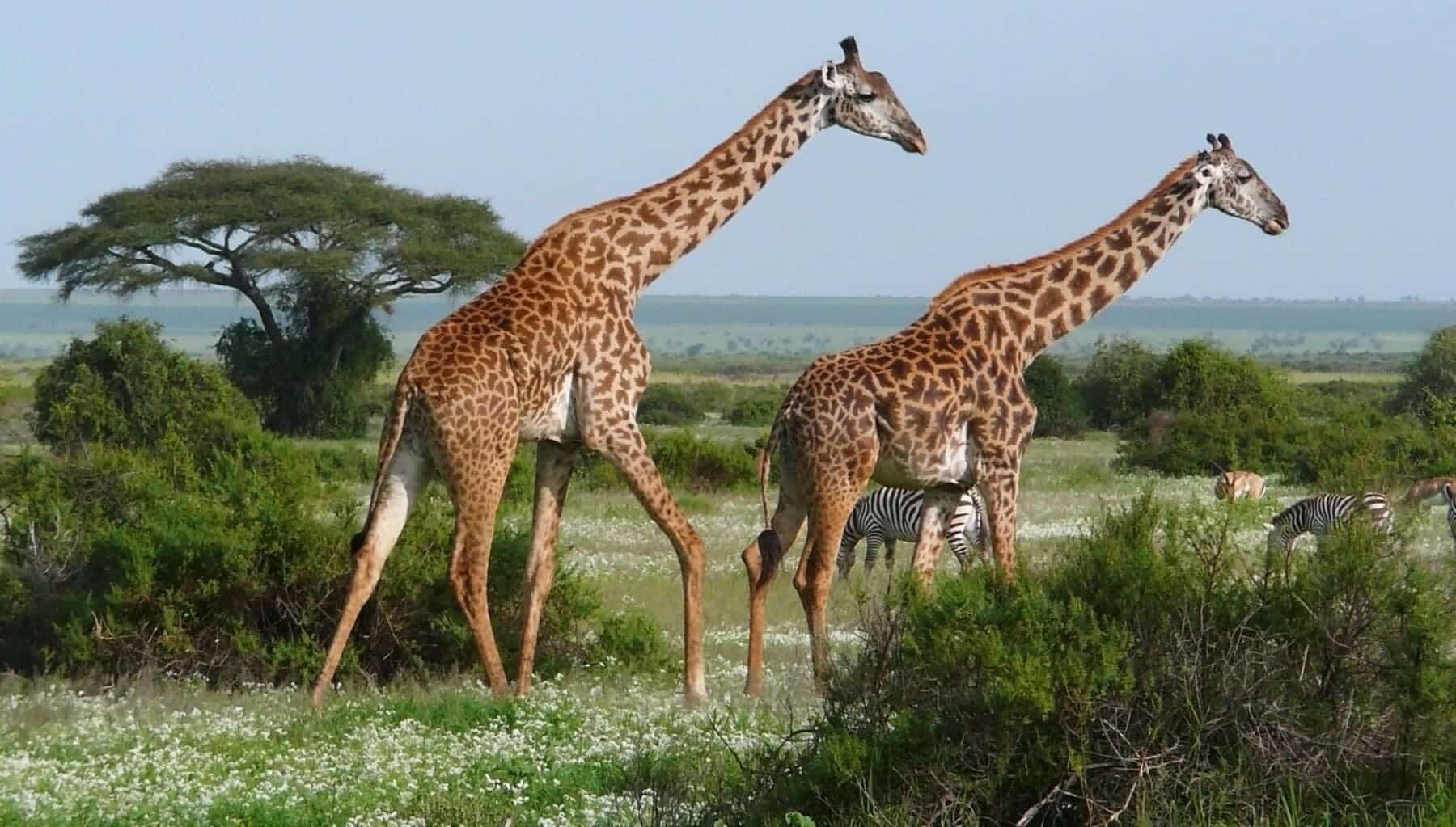The Giraf (Camelopardalis of the Giraffe) is an artiodactyl milder of the Giraffidae family that lives in Africa. It is the highest of all types of land animals that live today, since it can reach a maximum height of 5.7 meters. The weight can vary between 750 and 1600 kg.
Are adapted to reach vegetation that is inaccessible for other herbivores. They have a system of unusually elastic blood vessels with specially adapted valves that help them compensate for the sudden accumulation of blood when they raise or down their heads or waves quickly.
Four types of giraffes
The giraffe, one of the most iconic and unique animals in the worldCould be even more unique than we thought. An international study, in which the Autonomous University of Madrid (UAM) participates, has confirmed the existence of four different types of giraffes by a detailed analysis of the shape of their skulls. These findings underline the urgency to protect these species against ‘silent extinction’, since there are only 117,000 giraffes in the wild in Africa.

“The development and evolution of earnings, bony protrusions covered with skin that are very characteristic of giraffes are crucial for understanding their diversity and the relationships between the different Taxa,” Dr. Jesús Marugán-Lobón, professor at the UAM and co-author. Author of the study. “Our analysis shows that the variation of earnings for each species It is closely connected to the eye ranges of GiraffesWhat indicates that ossifiers and the field of vision have probably evolved together. “
3D technology puts an end to a long time of discussion
Although genetic studies have suggested for almost ten years that giraffes do not form a single kind, Morphological differences were not systematically analyzed. This gap led the Giraffe Conservation Foundation (GCF) to do global research in collaboration with centers such as the Senckenberg Biodiversity and Climate Center and universities in Europe and Africa.
Dr. Nikolaos Kargopoulos, main author and postdoctoral researcher at the University of Cape Town, has scanned a total of 515 giraffe skulls from museums, national parks, wild farms and private collections in 3D. “This study rbrings the largest series of skull data of any species together of medium or large terrestrial fauna, “explains Kargopoulos.
Loose Digital analyzes not only confirmed the differences between men and womenBut confirmed the existence of four genetically different species: the Masai, the northern, the net -shaped and the southern giraffe. These species exhibit unique skull organologies, with details in their ossicles that reflect their differentiated evolution. “When I started this project, I did not expect such clear differences,” admits Kargopoulos. “I thought a giraffe was just a giraffe. But the data revealed a completely different story. “
In -depth implications for nature conservation
The recognition of these four species has in -depth consequences for nature conservation. According to Dr. Julian Fennessy, director of the GCF and co-author of the study, should encourage the International Union to retain the official taxonomy of Giraffes for the preservation of nature (IUCN). “The efforts of Nature conservation must concentrate on any typeEspecially with those who have to deal with critically low numbers. Science is clear and we cannot allow any further delays. “
Stephanie Fennessy, executive director of the GCF, emphasizes: “We can only save what we know. Now that we have done that doubts removed about how many types of giraffes exist in natureIs it time to take action and secure their future in the wild before it’s too late. “
In short, this study represents a crucial step in encouraging suitable nature conservation actions, such as has recently emphasized the USFWS proposal to record all four species van Giraffes in the United States endangered species act.

